I’ve been building subwoofers for years now, and I’ve always used car audio drivers. However, I recently started building speakers using pro-audio drivers, specifically mid-woofers and horn loaded compression drivers. I love how dynamic and clean-sounding these drivers are, so it was only natural that I decided to give pro-audio subwoofers a try.
Unlike subwoofer drivers designed for car/home use, which typically favor deep bass output over efficiency, pro-audio subwoofer drivers excel at mid-bass punch that’s difficult for the less efficient drivers to match. Pro-audio drivers also feature strong motors that perform well in small enclosures. Their main limitation, however, is reduced output below 40 Hz. But by using multiple pro-audio drivers, it’s easy to achieve low-end performance comparable to their car/home audio counterparts, and when it comes to mid-bass punch, there’s simply no contest if both are driven with similar power.
I did some research on pro-audio subwoofer drivers with relatively low Fs (resonant frequency) and high Xmax (maximum linear cone excursion), and the Lavoce SAF184.03 stood out as a promising candidate. It features a beefy 4" voice coil and 1500W power handling. Some might scoff at the Lavoce’s 30 Hz Fs and 13 mm Xmax, but keep in mind that I plan to build multiple subwoofers in tiny sealed enclosures – at least by 18" subwoofer standards, so deep bass output likely won’t be an issue, and I’ll still be able to keep enclosure sizes in check.
The smallest enclosure that can house an 18" driver without sacrificing low-end output appears to be a 19" (~48 cm) cube, but rectangular enclosures are boring. I’ve built enough of those already. So, I made some quick sketches exploring alternative enclosure shapes. Although the octagon looked promising, the design featuring generous 4" (~10 cm) radius rounded corners was much more appealing to me, even though I knew it would be somewhat challenging to make.
 Compact subwoofer cabinet ideas.
Compact subwoofer cabinet ideas.
There are several methods to make wide-radius rounded corners, but kerf-bending a single sheet of wood is probably the most straightforward. You basically make deep parallel cuts in the wood in close succession, wet the cut areas, and then bend the wood around a form. I could have used MDF for everything, but 15 mm Baltic birch plywood not only keeps the enclosure weight in check but also is stronger than MDF –not to mention the wood grain looks very nice when stained a light color. The braces and baffle were made from 18 mm (~3/4") MDF.
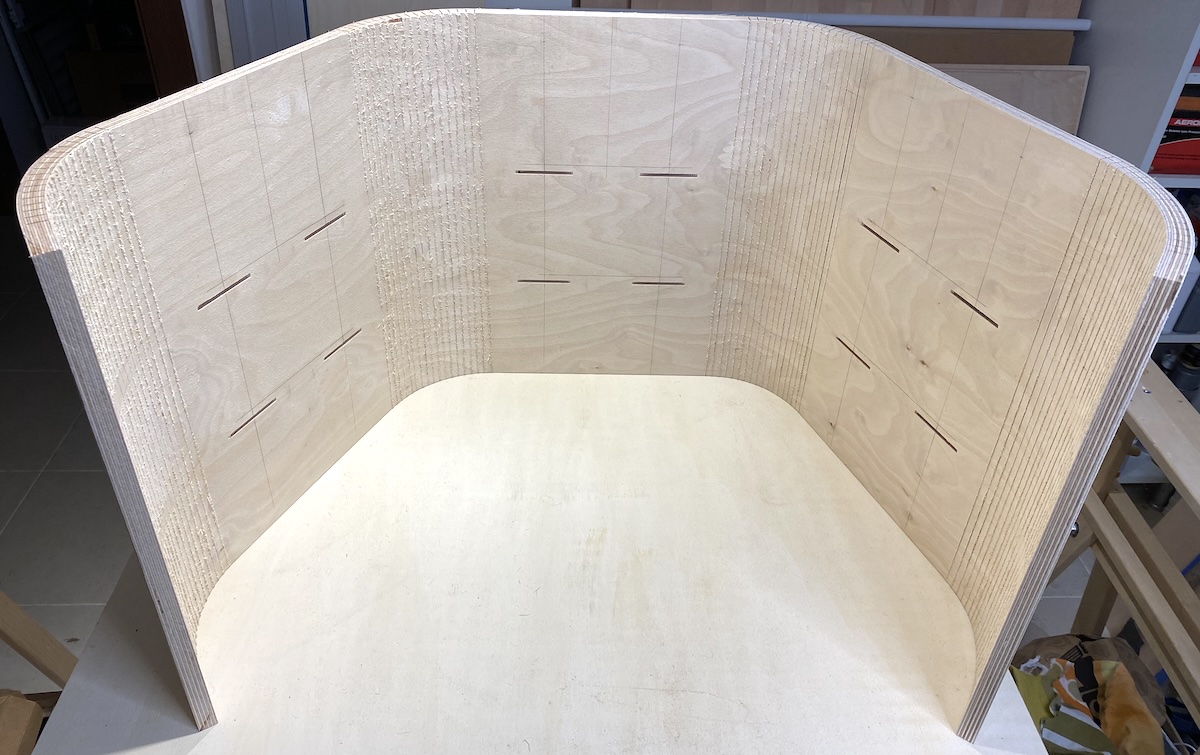 Kerf-bent Baltic birch plywood.
Kerf-bent Baltic birch plywood.
I used a biscuit joiner to cut slots in the plywood. The two MDF braces are attached to the plywood using biscuits, essentially serving as the form around which the plywood was bent.
 Kerf-bent Baltic birch plywood glued up.
Kerf-bent Baltic birch plywood glued up.
The braces also feature circular openings to support the heavy subwoofer motor, which probably weighs close to 15 kg (~33 lbs) by itself.
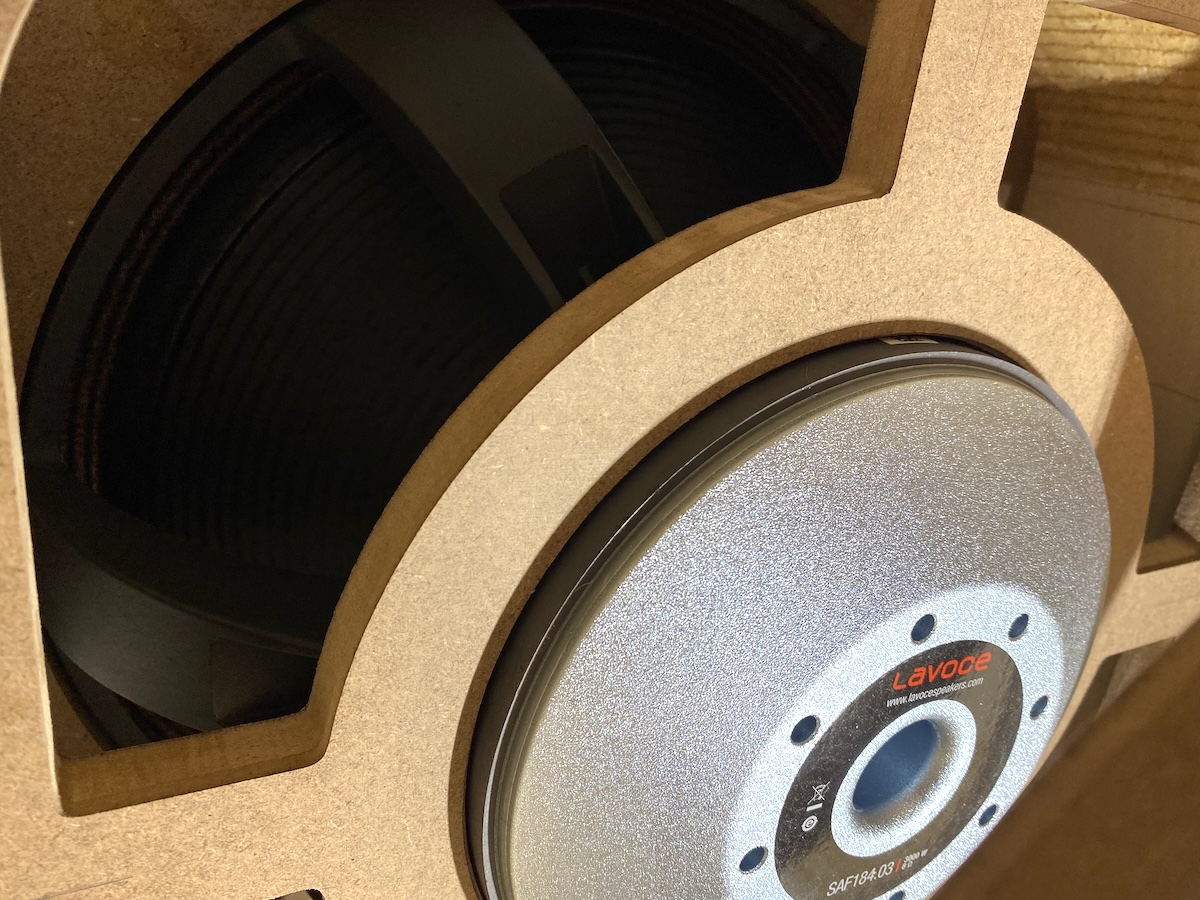 The subwoofer motor brace.
The subwoofer motor brace.
The front baffle and rear panel were painted black, and the birch plywood was stained white with a two-component oil. I lined the walls with polyfill sheets.
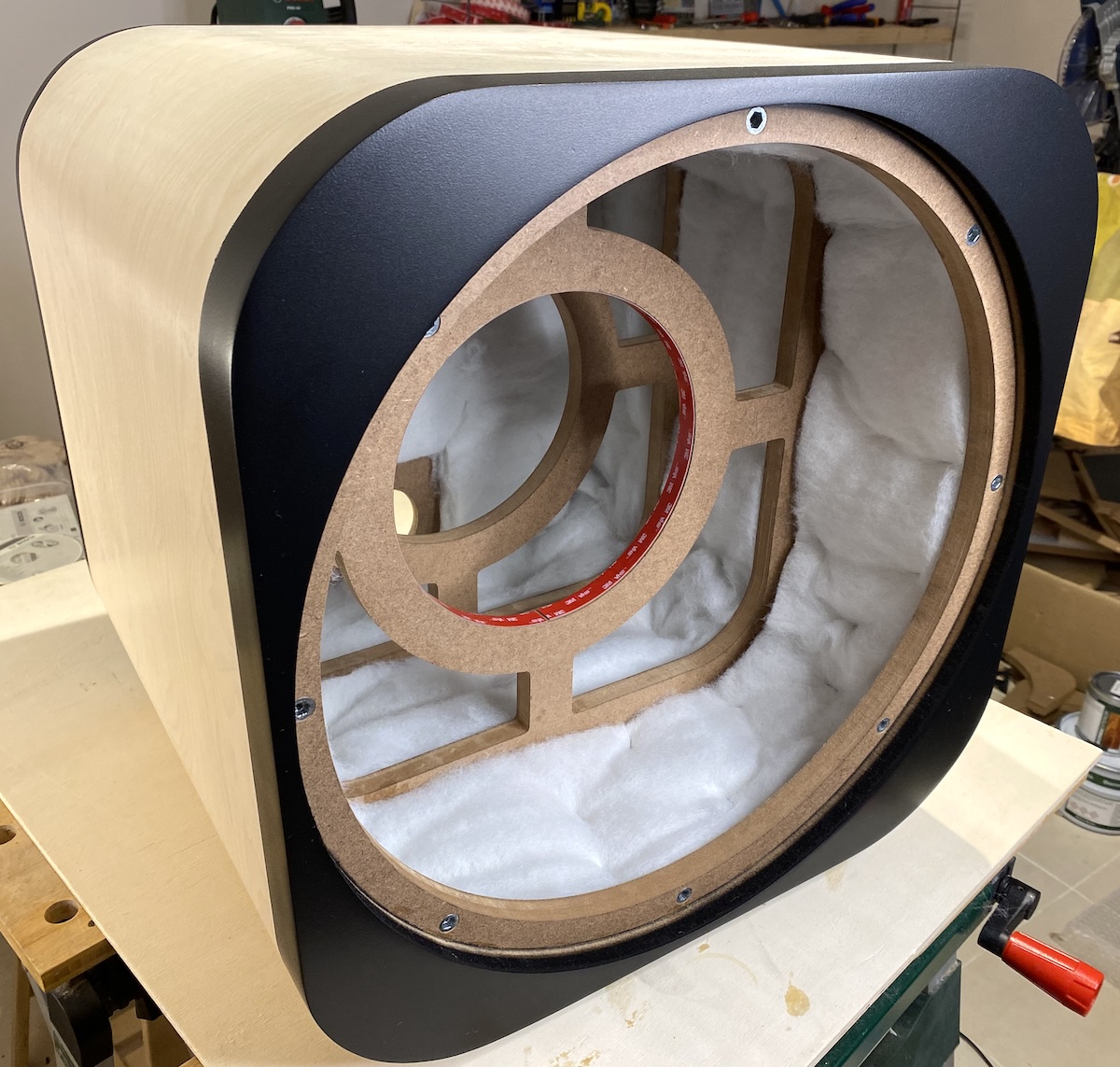 The cabinet was stained, painted, and lined with polyfill.
The cabinet was stained, painted, and lined with polyfill.
I placed four pillows filled with polyfill inside to improve deep bass response. In total, I used about 1 lb of polyfill per cubic foot. The gross internal volume, before accounting for driver displacement, is approximately 3 cubic feet (~85 liters), which is about 25% smaller than the typical minimum enclosure size recommended for a standard 18" car/home audio subwoofer.
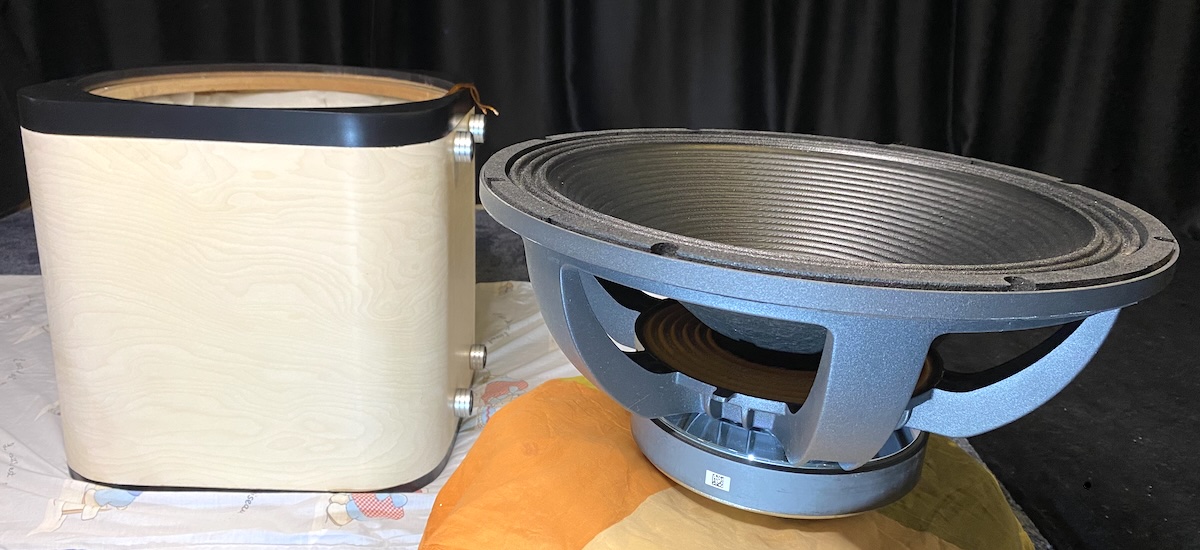 Driver and cabinet side by side.
Driver and cabinet side by side.
With the addition of polyfill, the subwoofer’s resonant frequency decreased from about 61 Hz to 56 Hz. The impedance curve reveals that inductance is well-controlled, allowing this subwoofer to be easily crossed over as high as 500 Hz. The nominal impedance is 8 ohms.
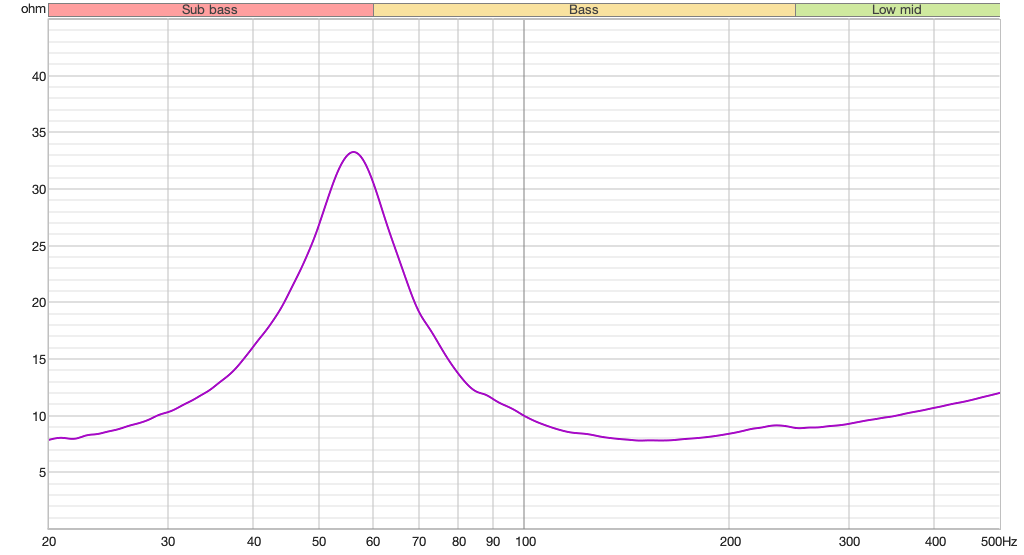 The impedance curve reveals that inductance is well-controlled.
The impedance curve reveals that inductance is well-controlled.
The near-field frequency response indicates a roll off that’s less steep than the expected 12 dB/octave for a sealed enclosure, thanks to the driver’s strong motor. When placed along a wall in a typical sized room, the subwoofer should deliver flat frequency response down into the mid-twenties, especially after reducing the ample mid-bass output using EQ or an AVR’s room correction capabilities.
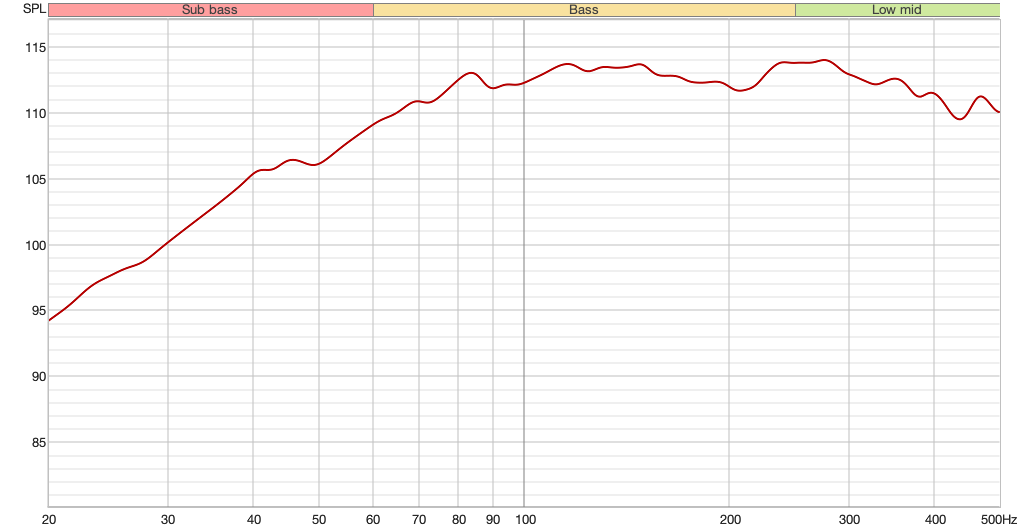 Near-field frequency response.
Near-field frequency response.
Cone excursion utilization is close to optimal. With just 550W RMS of power, assuming some amplifier roll off below 10 Hz, the subwoofer reaches about 70% of its maximum linear excursion at 50 Hz, and stays below 100% at lower frequencies. Note that Lavoce specifies around 10 mm of additional excursion beyond Xmax, providing a comfortable safety margin, though with increased distortion.
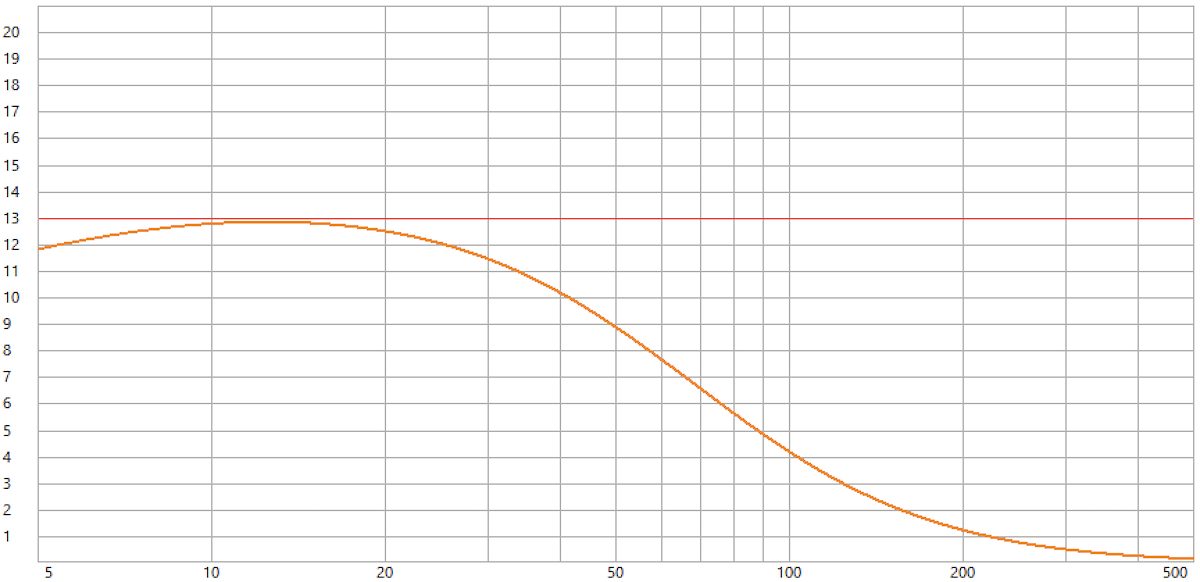 Near optimal excursion utilization with just 550W RMS.
Near optimal excursion utilization with just 550W RMS.
Very little amplifier power is needed above 50 Hz with a 100 Hz crossover. No wonder this subwoofer delivers such great mid-bass punch.
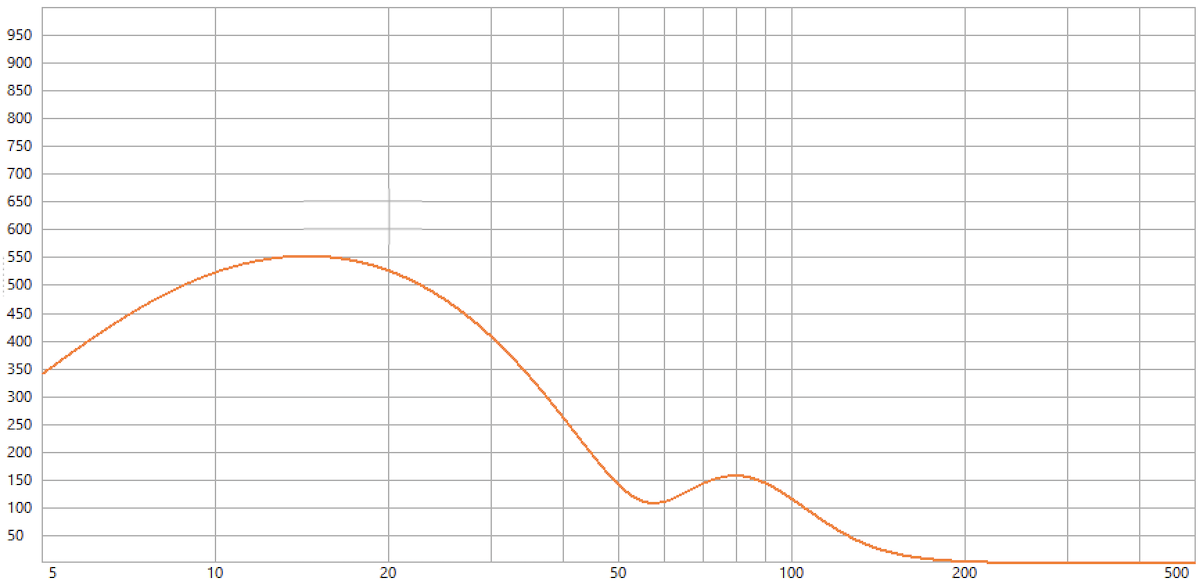 Very little amplifier power is needed above 50 Hz with a 100 Hz crossover.
Very little amplifier power is needed above 50 Hz with a 100 Hz crossover.
Finally, a complete build video is available below:
Related: